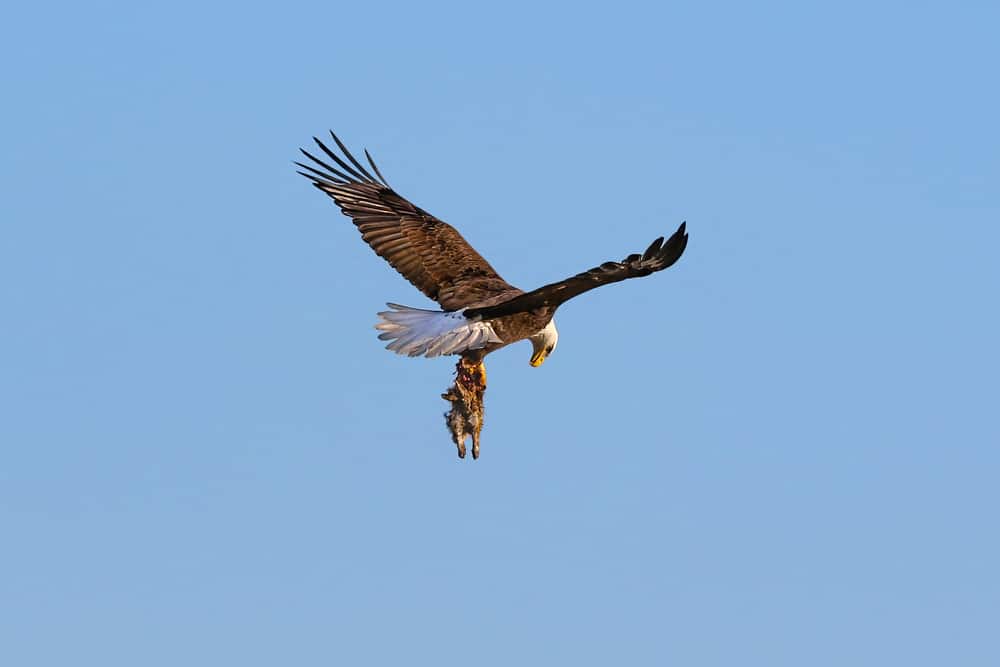
Wild and domesticated rabbits are found globally. These cute and cuddly lagomorphs have become entrenched in peoples’ minds as pets; however, their ecology goes much further than that. Rabbits often find themselves on the menu for many different species, but which animals, specifically, eat rabbits?
Rabbits are a common prey item for many bird, reptile, and mammal species. These include eagles and hawks, snakes and larger-sized lizards, large cat species, most dogs and their relatives, bears, and humans. The pet trade and zoos also use rabbits of various sizes to feed captive animals.
Rabbits have commonly eaten meat for many species, but how widespread are they as a food source? Are there any surprising species out there that eat rabbits? And why specifically are rabbits so popular as a menu item?
Table of Contents
- Rabbits As Prey Items Explained
- Animals That Prey On Wild Or Feral Rabbits
- Animals From North America
- From a global perspective
- Animals From North America
- Animals From A Global Perspective
- Bears That Eat Rabbits
- Other Mammals That Eat Rabbits
- Eagles From A Global Perspective
- North American Hawks
- Hawks From A Global Perspective
- Owls
- Rabbits As Food Items For Captive Animals And Pets
- Rabbits As Eaten By Humans
- Conclusion
Rabbits As Prey Items Explained

Leporidae is the family that rabbits and hares are classified under. Although originating in Africa and Europe, they have become widespread across most continents.
There is technically only one genus for all of the hares found in this family, the Lepus, while there are ten genera and 25 species of rabbits. There are around 54 different species in total.
Rabbits are considered prey animals, and their evolution to reach this point is a bit of a perpetuating spiral.
Rabbits lack effective defense mechanisms (aside from running away), which means larger predators could catch them with relative ease.
This necessitated the prolific breeding and large litters that rabbits (and hares) are so well known for.
Rabbits (and hares) range from 0.66 pounds to around 11 pounds.
Rabbits are a source of protein, and when threatened, either run or lie still and try to hide. This, coupled with their distribution and the range of habitats they occupy, places them on many predators prey lists.
Animals That Prey On Wild Or Feral Rabbits
Wherever rabbits are found, whether through the original extent or as an introduced species, rabbits form part of most food webs.
Below are some examples of animals that eat rabbits, from both a North American perspective and a global one.
Mammals That Eat Wild Rabbits
Mammals are what most warm-blooded, fur-covered animals are classified as. This class of creature is broad in distribution and includes herbivores, omnivores, and carnivores.
Mammals have adapted to survive in almost all environments and eat a large variety of food sources, including rabbits (for many carnivores and omnivores)
Below are some of the families and species of animals that eat rabbits.
Felidae Which Eat Rabbits
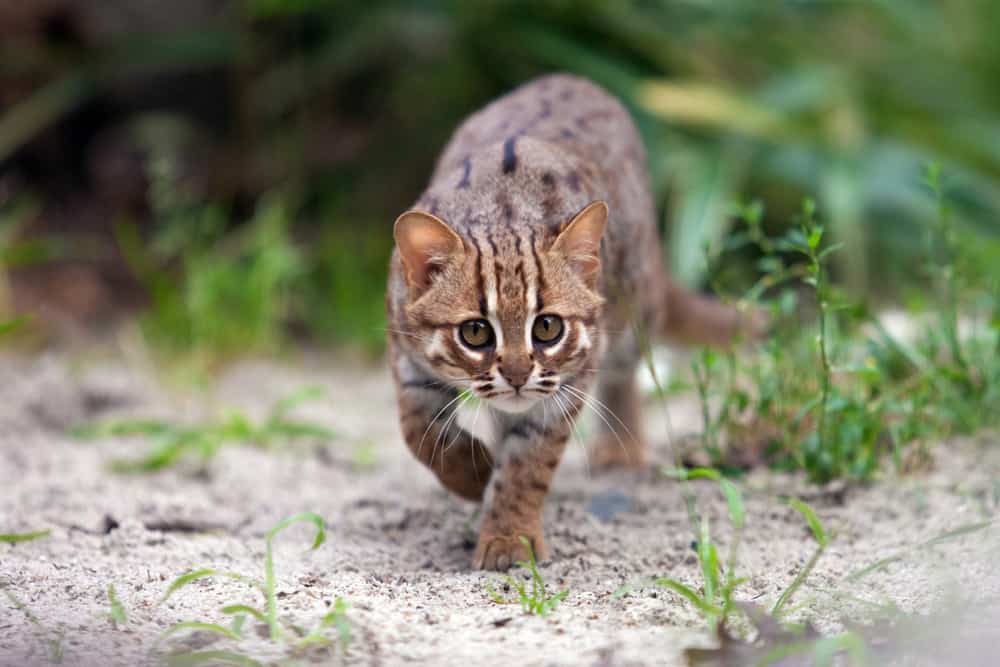
This vast family of animals is renowned for their hunting prowess, and almost all are strictly carnivores.
The species within this family range from the Siberian tiger, at an average of 386 pounds, to the Rusty-spotted cat at an average of three pounds!
Below are some examples of cat species that have rabbits as part of their diet.
Animals From North America
Mountain Lions (Felis concolor)
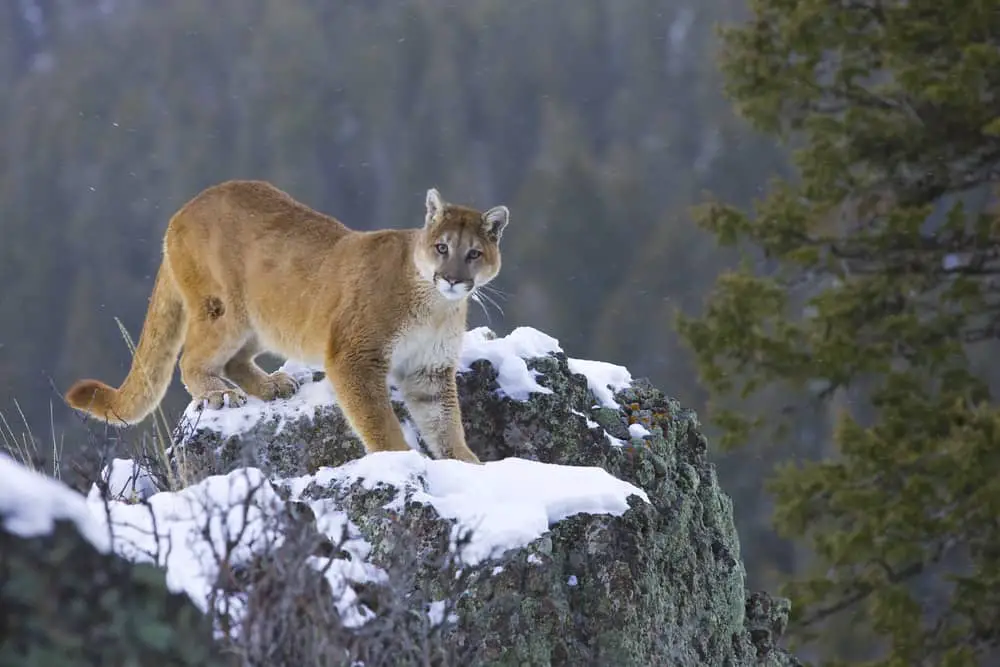
Mountain lions are some of the largest cat species found in North America. Males grow to anywhere between 155 and 220 pounds, while females tend to be smaller between 65 and 90 pounds.
These cats are located across the USA and are most often found in wide open, rocky areas, deserts, forests, and wetlands, away from human settlements. They are considered threatened.
A large species like this will consume various prey items, including rabbits, although their primary food source is deer.
These are nocturnal hunters, ambushing their prey.
Ocelots (Leopardus pardalis)
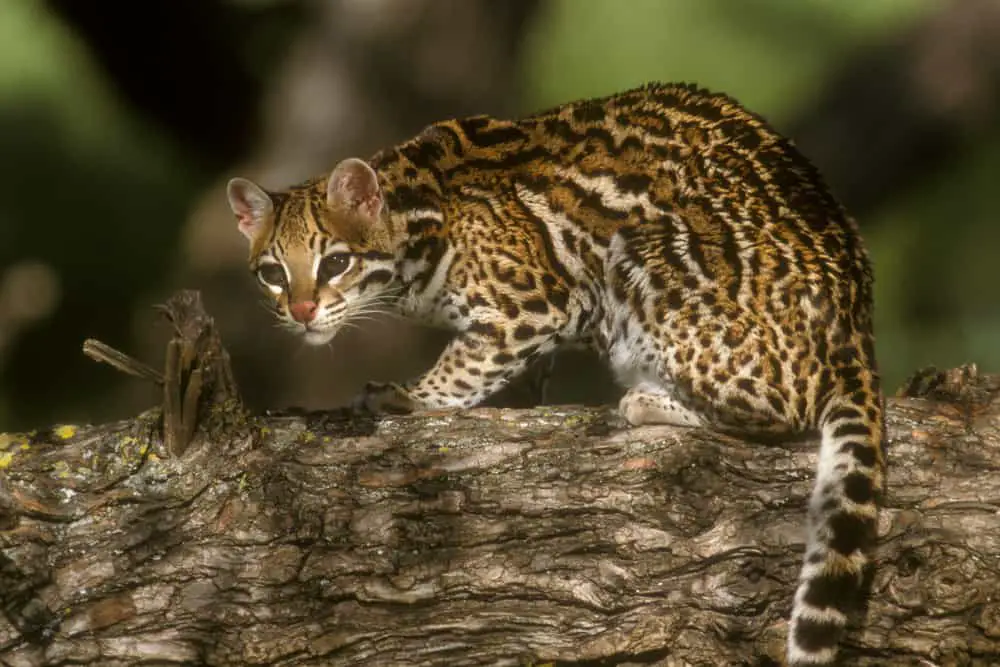
The Ocelot is a medium-sized cat that reaches weights of between 24 and 35 pounds.
Their distribution in the USA is limited to South Texas and Arizona, where they inhabit areas with dense plant cover. They are considered to be of least concern.
The diet of Ocelots includes many small to medium-sized mammals, of which rabbits are grouped. They are also nocturnal hunters.
Bobcats (Lynx rufus)
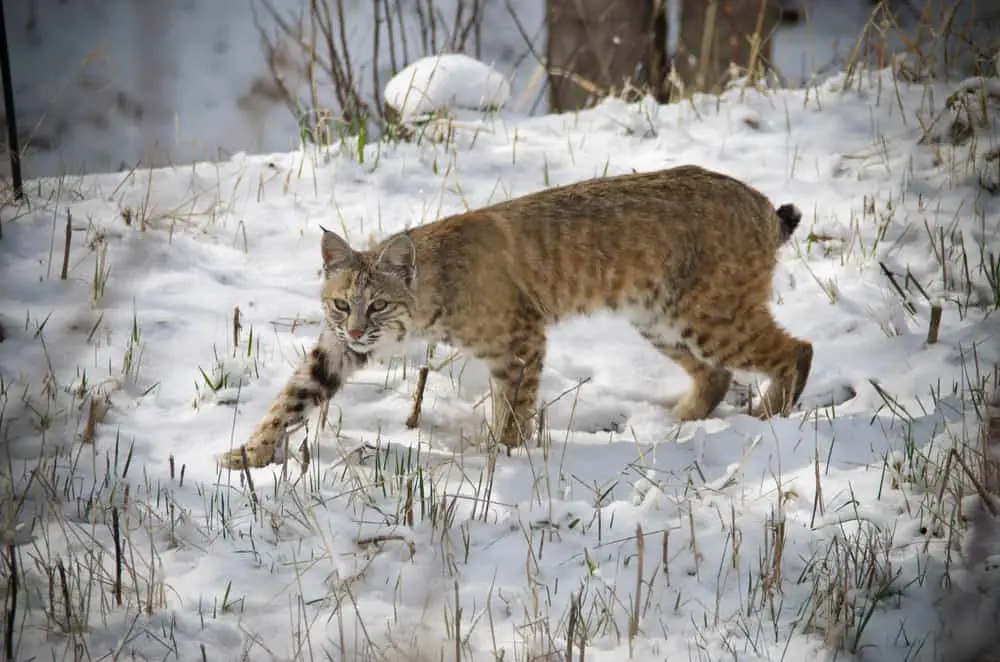
The Bobcat is also a medium-sized cat, weighing up to 33 pounds.
They are located across most of the USA and are found in woodlands, swamplands, and semi-desert areas. They are considered as “least concern.”
Bobcats eat a range of prey items, which include eastern cottontail rabbits. They are generally crepuscular hunters.
From a global perspective
Leopards (Panthera pardus)
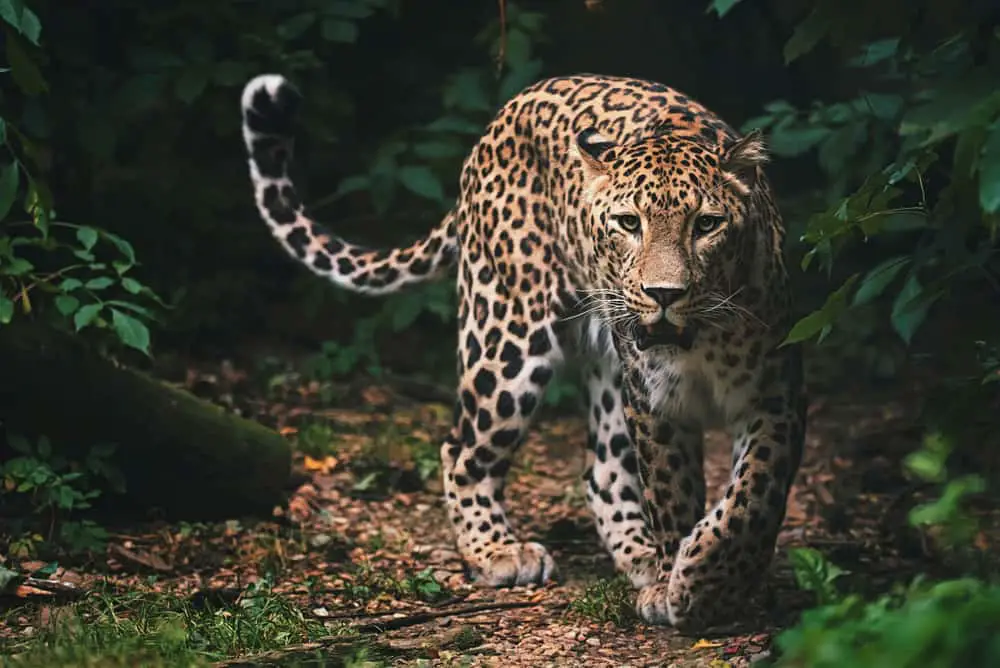
Leopards are large cats, with males weighing up to 198 pounds.
They are found across most of Africa, the Middle-east and parts of Asia. Leopards utilize a range of habitats which include savannas, desserts, rainforests, and mountains.
Leopards are considered near threatened.
Leopards eat a diversity of prey species, the majority being large mammals. They do, however, also eat smaller mammals, including rabbits. They are nocturnal hunters.
Lions (Panthera leo)
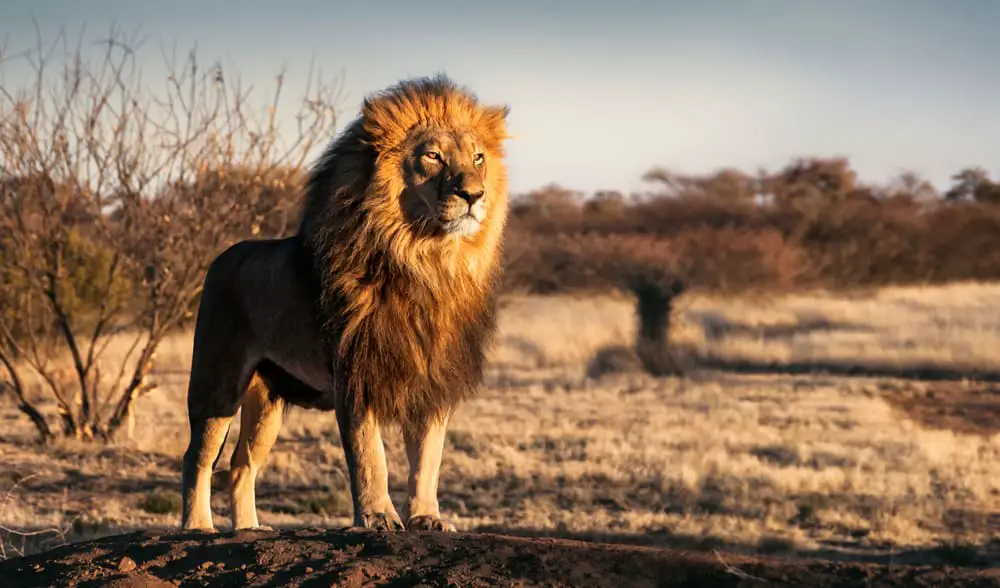
Dubbed the “kings of the jungle,” male lions reach staggering weights of 419 pounds, while the smaller females reach 287 pounds.
Lions are located primarily across sub-Saharan Africa, with a small population in India. Lions are found in savannas, grasslands, and semi-desert habitats. Lions are considered vulnerable.
Lions eat a massive range of prey items. They mainly target large ungulates but will eat smaller mammals, like rabbits. They are diurnal hunters.
Cheetahs (Acinonyx jubatus)
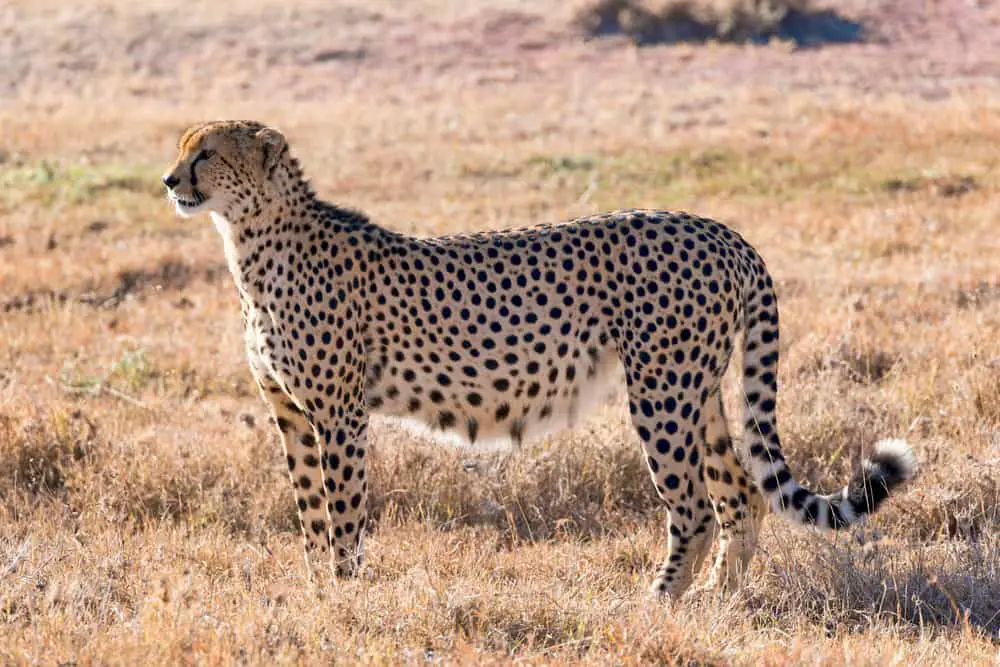
Cheetahs are some of the smallest “big cats,” weighing between 46 and 159 pounds.
Cheetahs are found across Africa and parts of Iran. They are found in savannas, grasslands, and desserts. Cheetahs are considered vulnerable.
They eat a variety of food sources, which are primarily ungulates. Cheetah will, however, eat rabbits when available. They are diurnal hunters and chase down their prey at speeds of up to 70 mph.
Tigers (Panthera tigris)
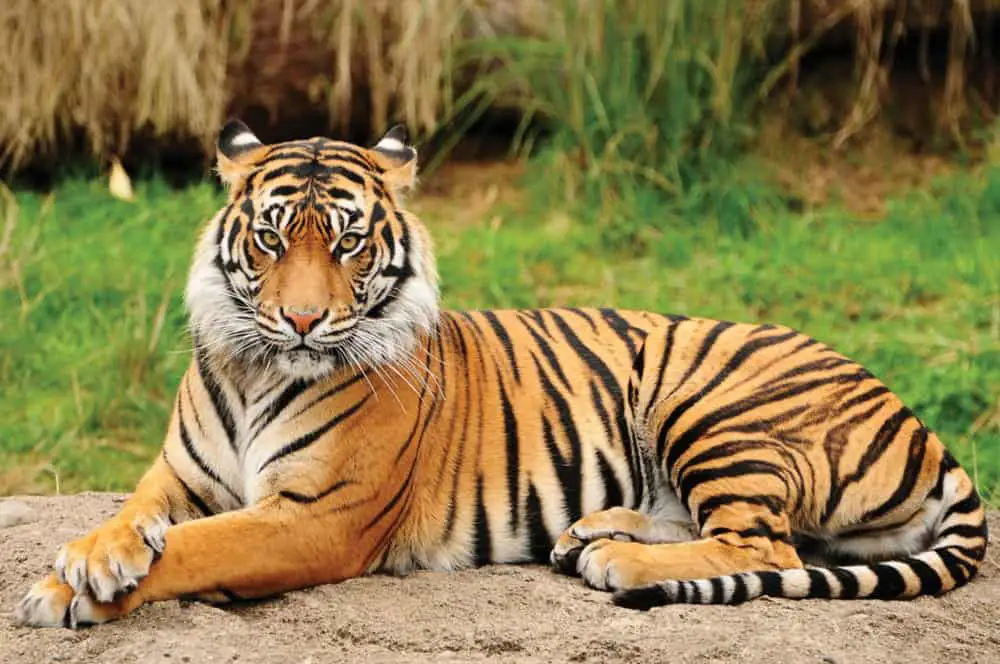
Tigers are the biggest “big cats,” with male Siberian tigers weighing 419 pounds.
Their distribution is mainly limited to parts of Asia and the Indonesian Islands. Tigers inhabit primarily forested areas but also tundra, savannas, and grasslands. They are considered endangered.
Tigers eat mostly larger ungulates but will eat smaller mammals, like rabbits. Tigers are generally nocturnal hunters, ambushing their prey.
Jaguars (Panthera onca)
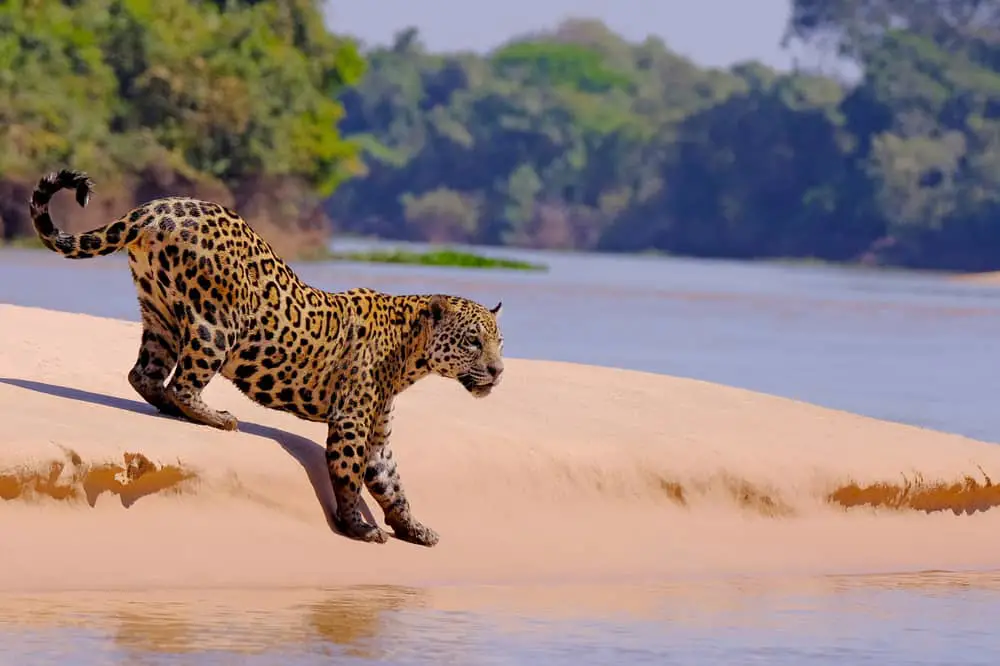
Jaguars are large cats, weighing between 123 and 212 pounds.
Located chiefly in Central and South America, jaguars inhabit forests, swamps, scrublands, and grasslands. They are considered near threatened.
Jaguars are renowned for eating a range of prey items, including reptiles, bighorn sheep, and birds. Jaguar will also eat rabbits. They hunt by ambushing prey from out of a tree and are nocturnal.
Domestic Cats (Felis catus)
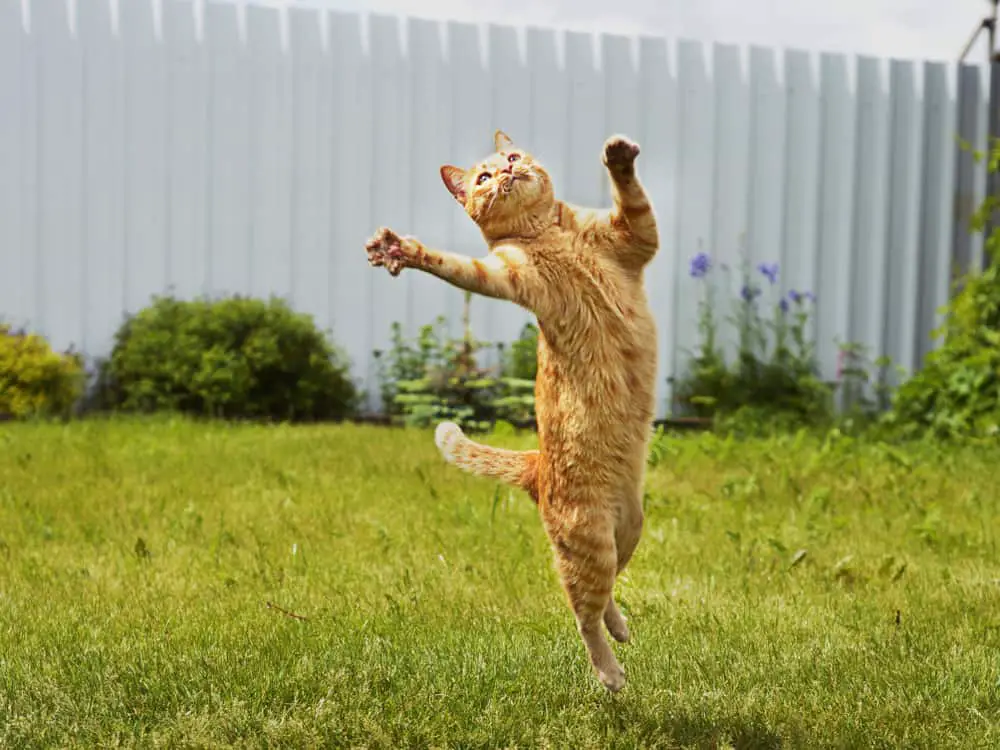
Yes! A domestic cat can and will eat a rabbit if the opportunity presents itself.
They generally won’t target adult-sized rabbits of the larger breeds (but not impossible!), but smaller rabbits and juveniles/babies are fair game.
Not too surprising when your house cat and tigers share 95.6% of the same genetics!
Canidae Which Eat Rabbits
The dog family is also diverse, ranging from wolves and coyotes to small lap dogs.
They are adapted to a wide variety of environments, from desserts and rainforests to urban areas. As a result, they also have a varied prey selection.
Many are generalists and will work together in packs to hunt down larger or more challenging prey when feeding.
Animals From North America
Coyotes (Canis latrans)
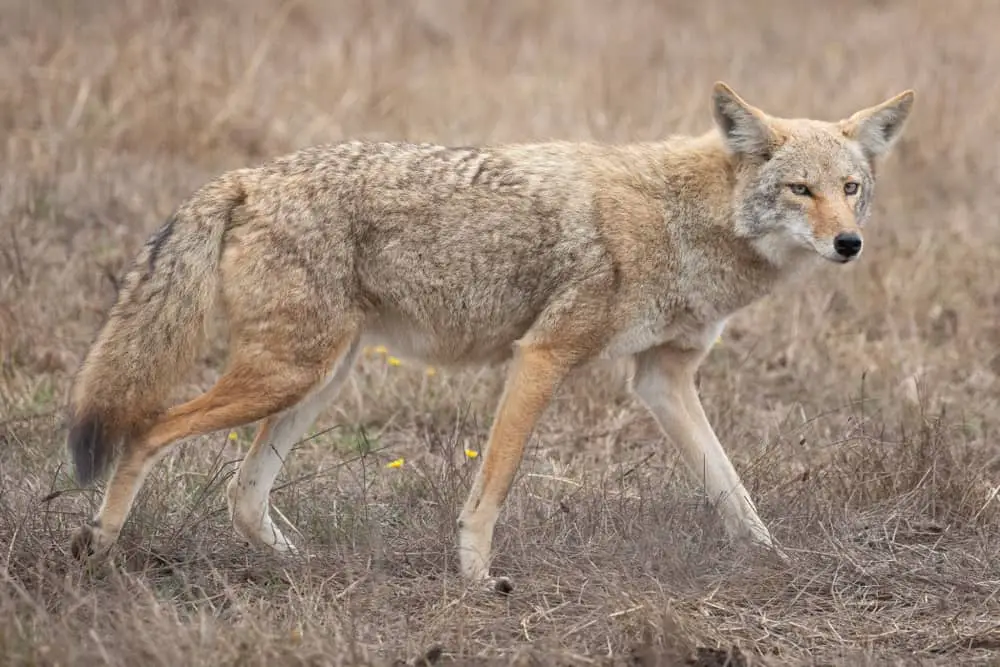
Coyotes are medium-sized canids, which reach sizes of between 25 and 35 pounds.
Coyotes are exclusive to and widespread across the North American continent. Coyotes occupy a variety of habitats, including prairies, desserts, and urban areas. They are considered of least concern.
The bulk of a coyote’s diet consists of small rodents, fruit, deer, and rabbits. Coyotes stalk small prey and pounce on them. They co-operate to hunt prey of substantial size.
They are crepuscular.
Wolves (Canis lupus)
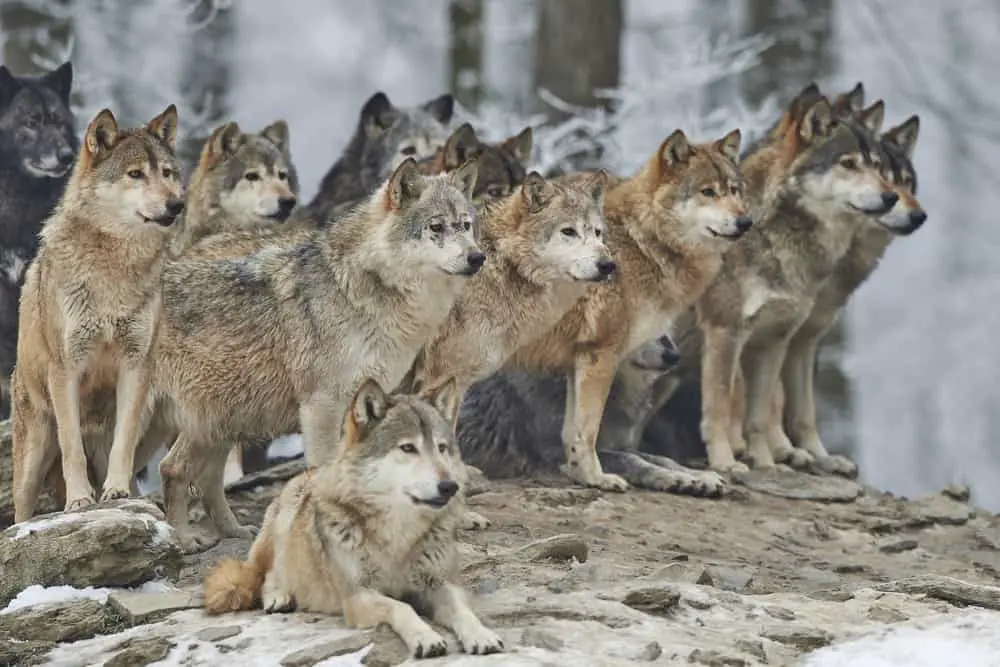
Wolves are the largest of the wild canids. The grey wolf can reach weights of around 175 pounds.
Wolves are distributed across North America, Europe, Asia, and parts of Africa. They occupy many habitats, which include tundra, forests, grasslands, and deserts.
Wolves are considered as least concern.
Wolves, like coyotes, eat a range of food items, but the bulk of their diet comes from larger ungulates. They do, however, eat smaller mammals, which includes rabbits. Wolves usually hunt in packs. They are diurnal.
Animals From A Global Perspective
Jackals (Canis aureus, C. adustus, C. mesomelas)
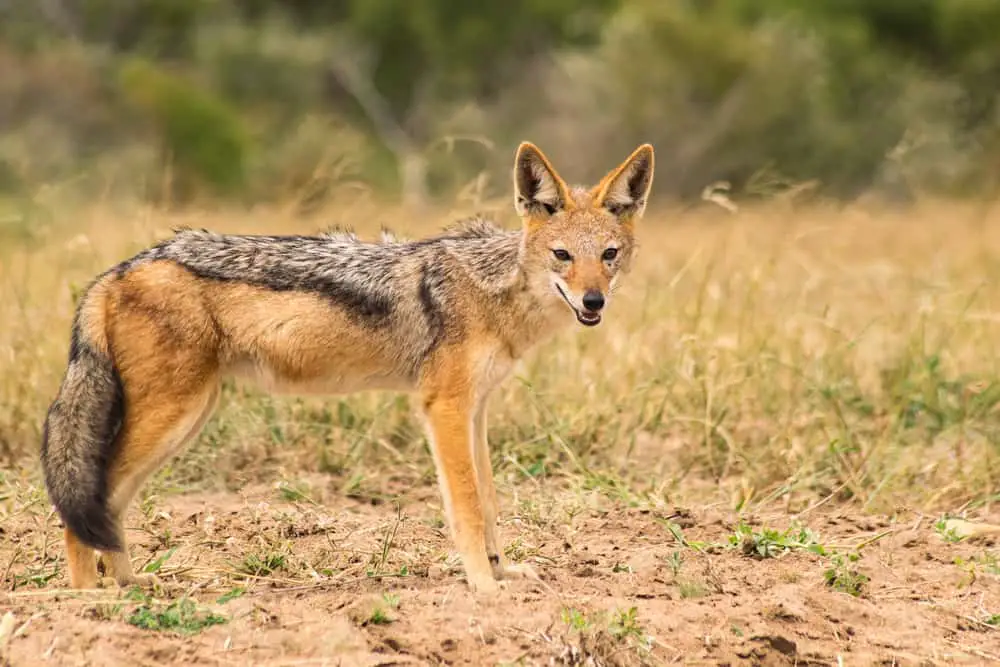
Jackals are medium-sized canids that reach weights of between 17 and 25 pounds.
Jackals are found across Africa in various habitats, ranging from semi- desserts and savannas to grasslands. They are considered “least concern.”
Jackals have an omnivorous diet. Prey items include small antelope, reptiles, birds, and small mammals, like rabbits.
Jackal will often hunt in packs to take down larger prey. They are crepuscular.
African Wild Dogs (Lycaon pictus)

These medium to large canids weigh between 35 and 50 pounds.
African Wild dogs are primarily found in Southern Africa. They inhabit savannas and open plain areas. They are considered to be endangered.
African Wild dogs are known for eating larger ungulate species. They are, however, opportunistic and will eat smaller mammals, such as rabbits, as well.
They work together as a pack to bring down prey items. They are diurnal.
Dingoes (Canis lupus)
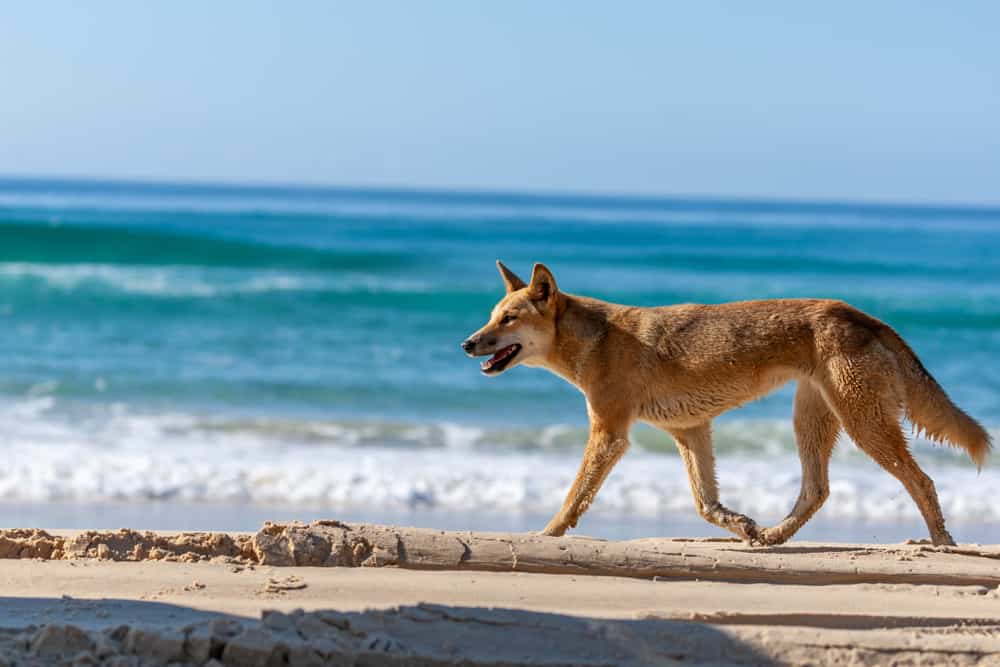
Dingoes are medium-sized canids weighing between 22 and 33 pounds.
Dingoes are mainly found across Australia and some areas of Southeast Asia. They are found in forests, plains, and mountainous areas. They are considered to be vulnerable.
Dingoes are mostly carnivores; however, they do eat fruits and nuts occasionally. Their primary prey includes rodents, rabbits, birds, and lizards. Dingoes hunt in packs and are nocturnal.
Domestic Dogs (Canis familiaris)
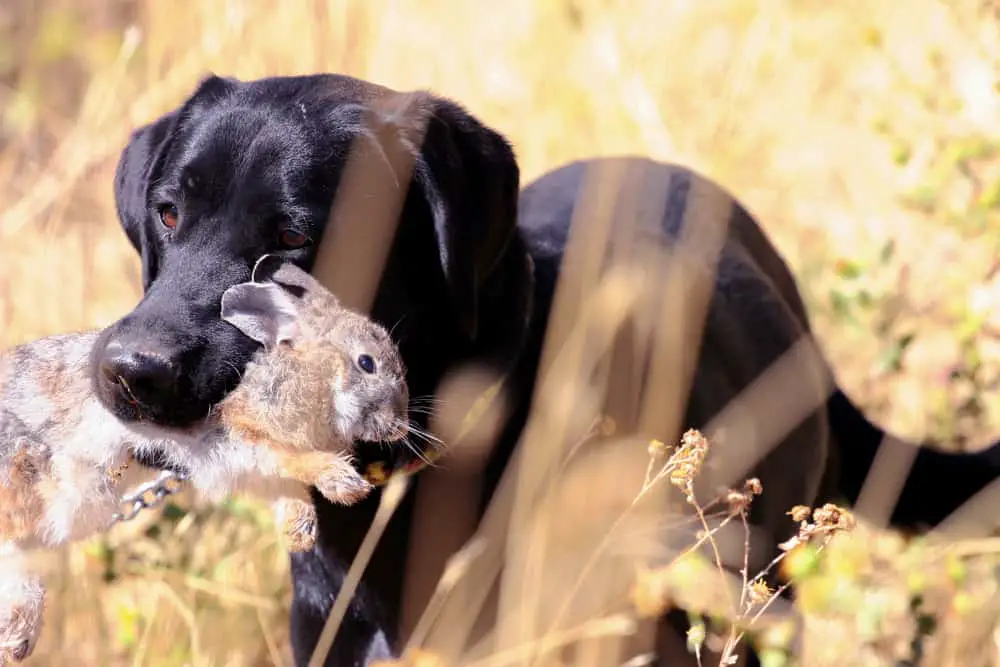
As with their cousins, the wolf, domestic dogs are not exclusive carnivores and eat a variety of food types.
Domestic dogs will work together in a pack (especially in cases where they have become feral) to hunt rabbits and other smaller prey items.
Some breeds of dogs were specifically bred to hunt rabbits. Examples include Jack Russell Terriers, Beagles, and Basset hounds.
Bears That Eat Rabbits
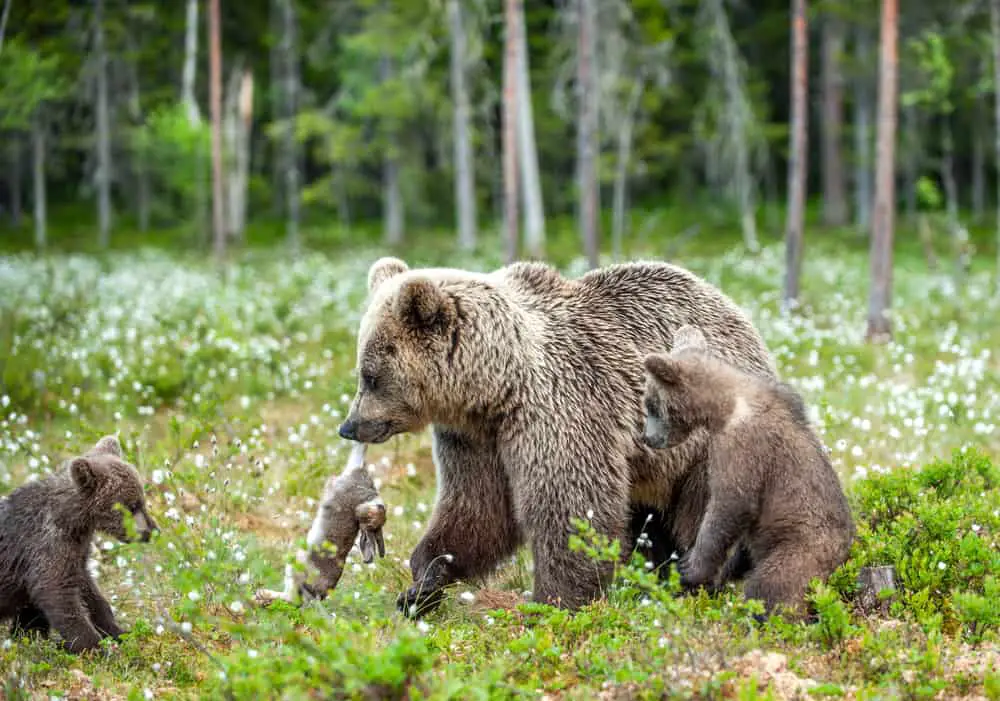
There are eight species of bear found globally, with a range in weight from 60 to 1500 pounds (the polar bear).
Bears are some of the mega predators found on land. They are found across North and South America, Europe, and Asia. The range of habitats that bears occupy includes the Arctic Tundra, Forests (coniferous and deciduous), prairies, mountains, and desserts.
Bears generally have an omnivorous diet, with a significant component of fruits, nuts, and berries.
Although rabbits will not generally form a large part of any bear’s diet, they will still catch and eat a rabbit if the opportunity provides itself.
Other Mammals That Eat Rabbits
Aside from the previously mentioned groups, some other mammals that may eat rabbits include:
Raccoons (Procyon lotor)
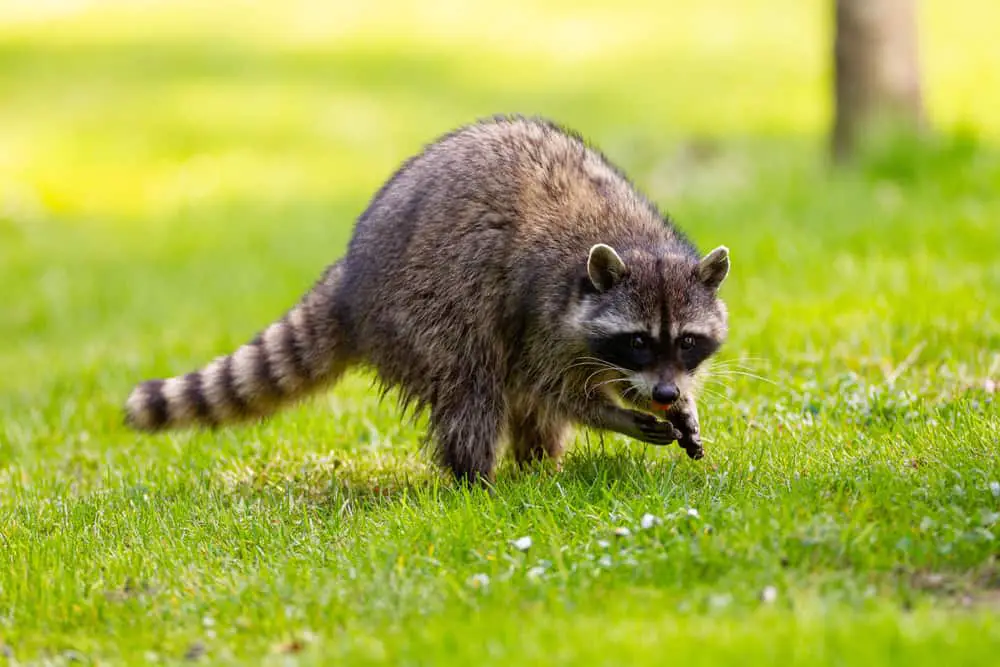
Raccoons are opportunistic omnivores. They eat various food items and will catch and eat rabbits (adult may be difficult, but juvenile and baby rabbits are on the menu).
Rabbits that eat rabbits
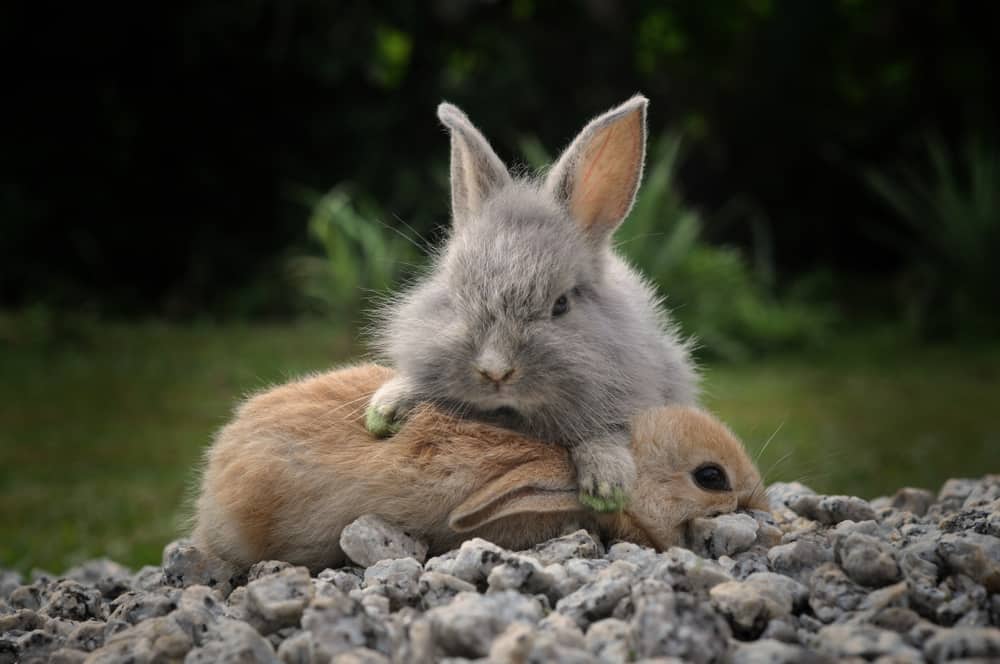
This is not quite the same as the above, but some rabbits commit infanticide. This is a very infrequent occurrence.
Researchers, however, have found evidence of certain hares cannibalizing other hares’ dead carcasses.
Birds That Eat Wild Rabbits
One of the significant predators of rabbits is birds. Perfectly adapted for ambush hunting and able to reach incredible speeds, birds can mitigate a rabbit’s primary defense mechanism, flight.
Birds have incredible eyesight (and hearing when it comes to owls), allowing them to detect rabbits from far off.
Some examples of birds that eat rabbits include:
Eagles
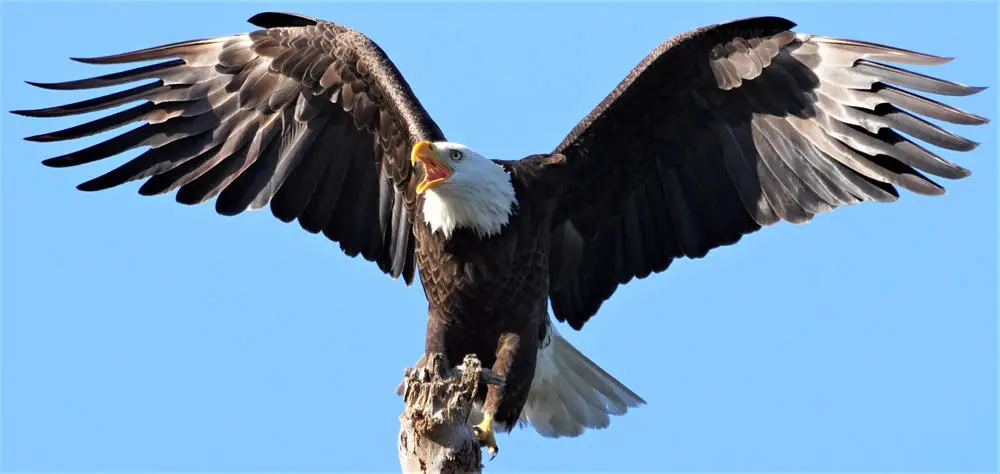
Some of the physically largest predatory birds, eagles, can weigh up to 20 pounds (Steller’s Sea Eagle). Eagles eat a variety of prey items.
North American Eagles
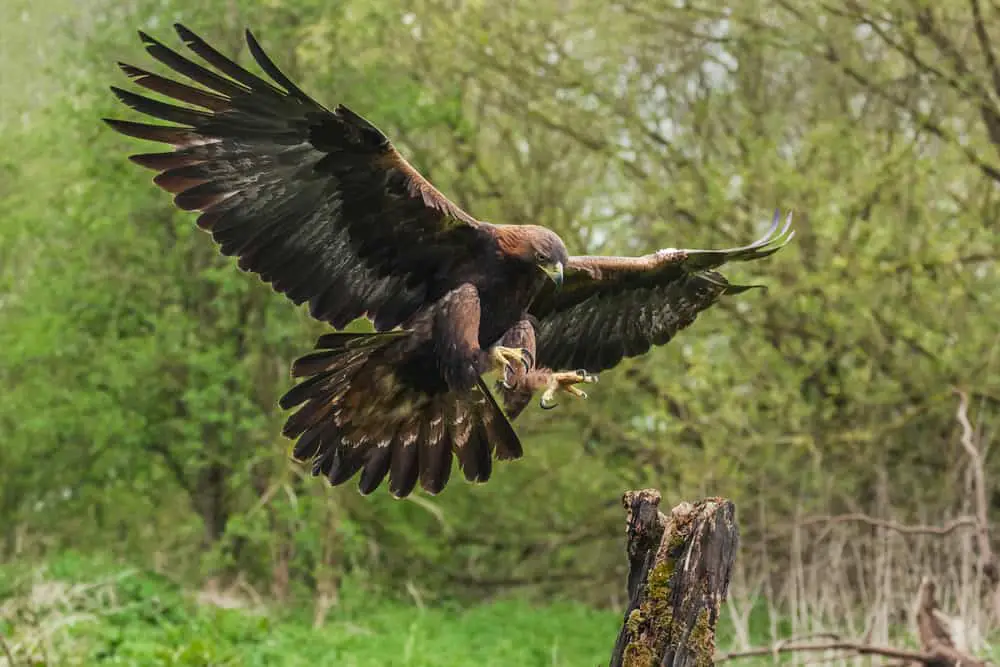
Golden Eagles (Aquila chrysaetos)
These are the largest eagle species in the USA, up to a weight of 15 pounds.
They are found in mountainous areas and eat a range of small mammals and birds.
Eagles From A Global Perspective
Martial Eagle (Polemaetus bellicosus)
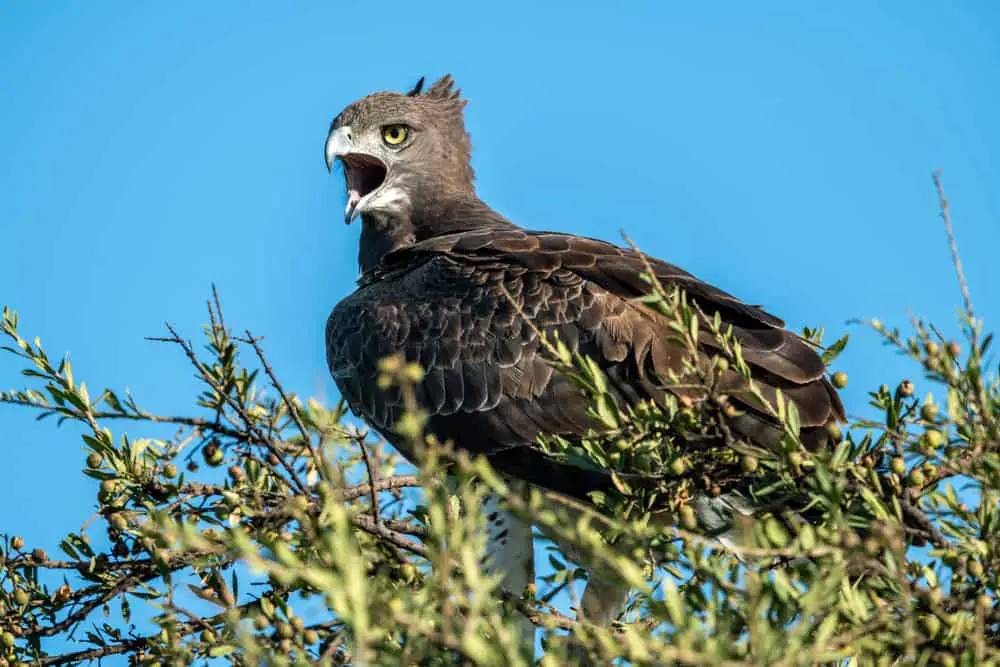
These 14-pound African birds are known to eat mammals, including monkeys, hyraxes, and lambs. If there is a rabbit available, they will eat it.
Harpy Eagle (Harpia harpyja)
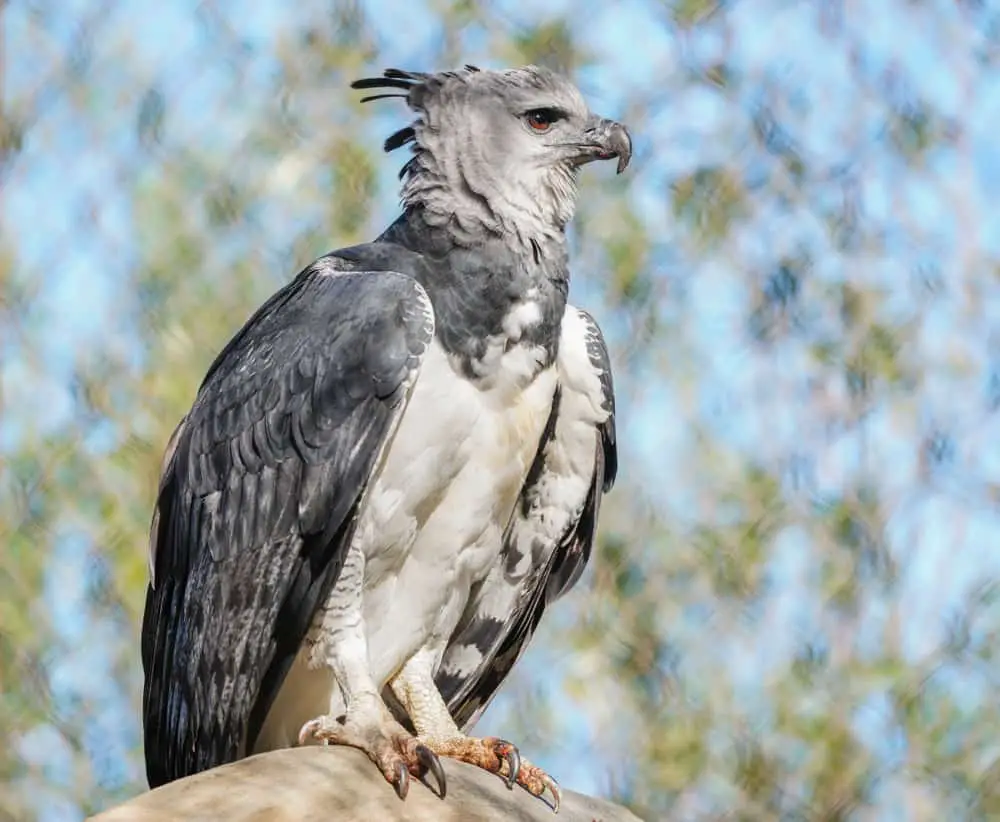
These 20 pound Central to South American raptors also eat a range of mammals, birds, and reptiles.
Hawks
Hawks are more diminutive than eagles but are no less accomplished as predators. They are found over a variety of habitats and continents, where they have a range of prey items.
North American Hawks
Red-tailed Hawks (Buteo jamaicensis)
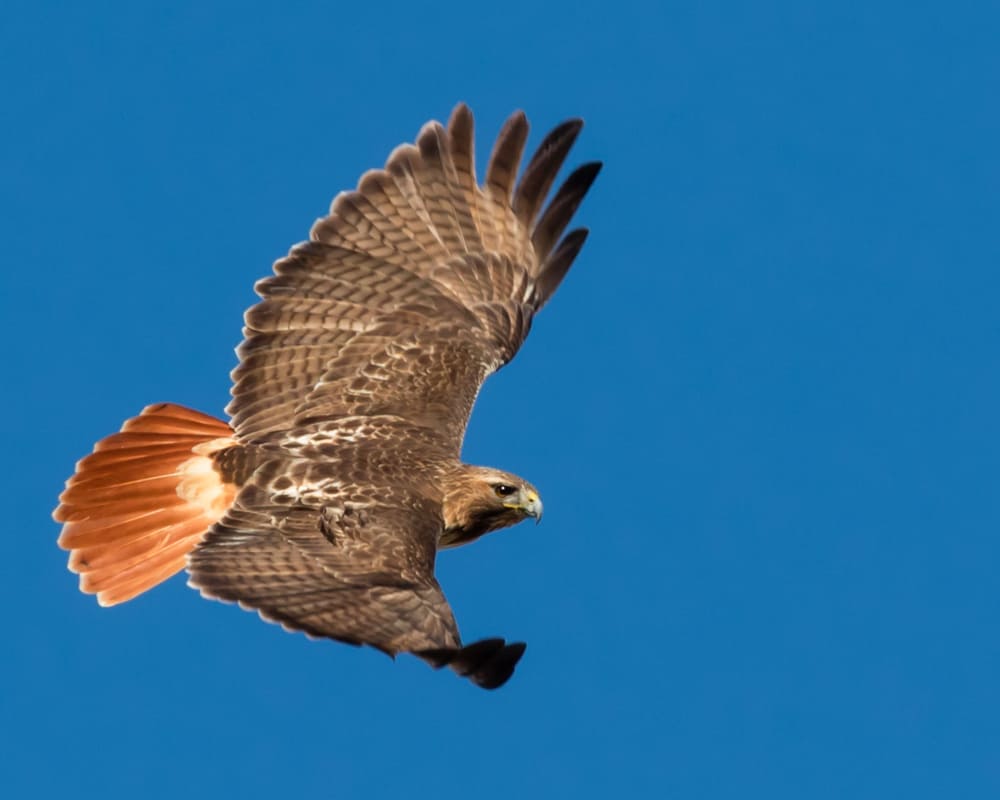
These 24.3 to 51.5 oz (females are larger than males) raptors are found mostly over open fields. Rabbits and other small mammals form the bulk of their diet.
Northern Harrier (Circus hudsonius)
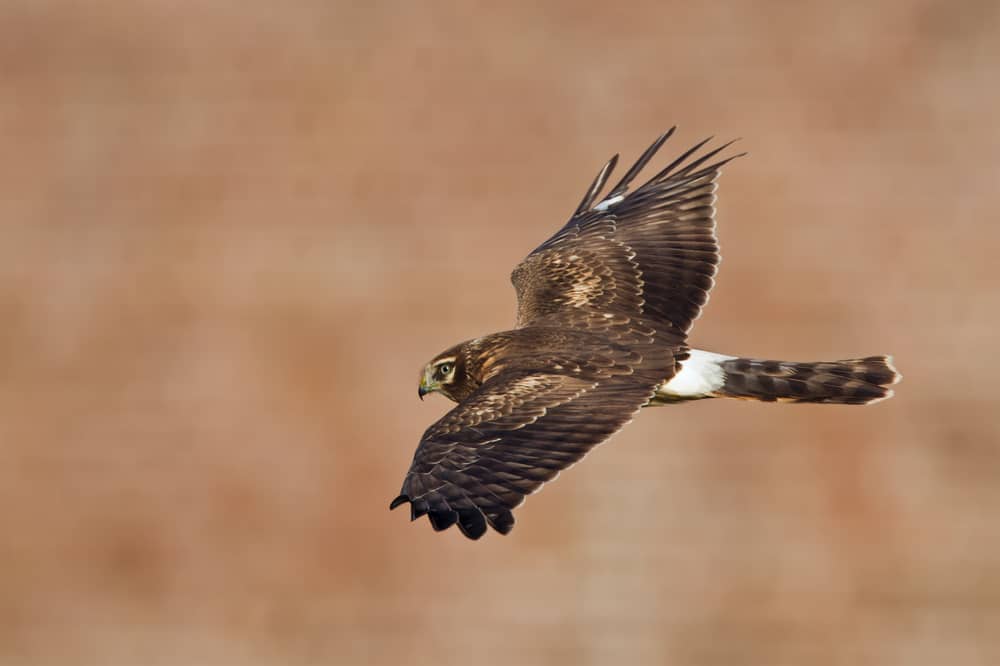
These 10.6 to 26.5 oz theropods are often found over prairies, marshlands, and fields, where they prey on small mammals.
Hawks From A Global Perspective
Jackal Buzzard (Buteo rufofuscus)
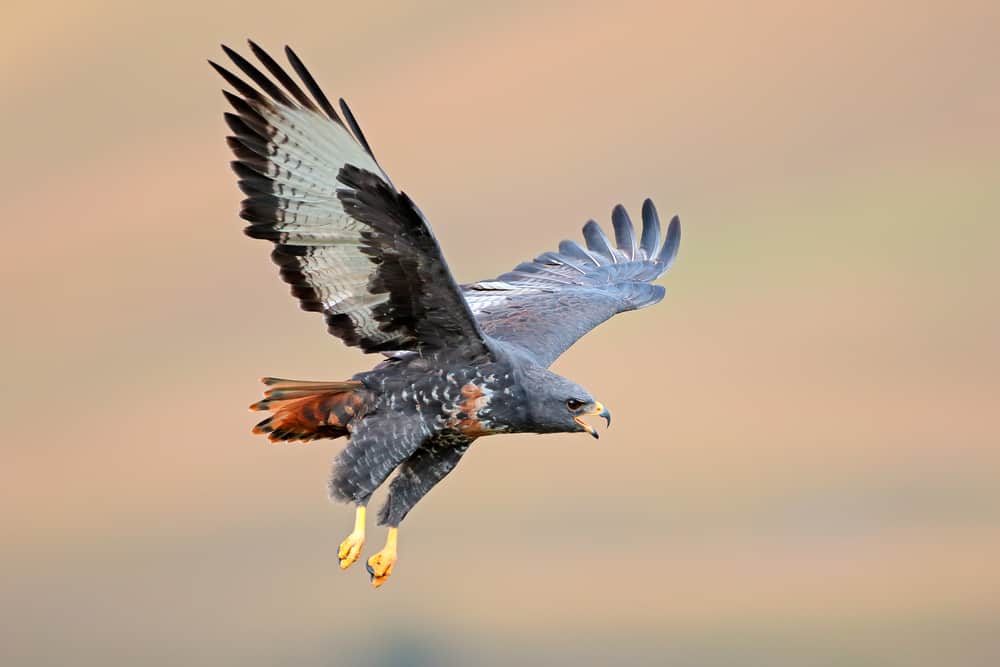
These South African birds weigh between 27.84 and 48.32 oz (females are larger). They are found in mountainous areas where their diet includes small mammals.
Eurasian Sparrowhawk (Accipiter nisus)
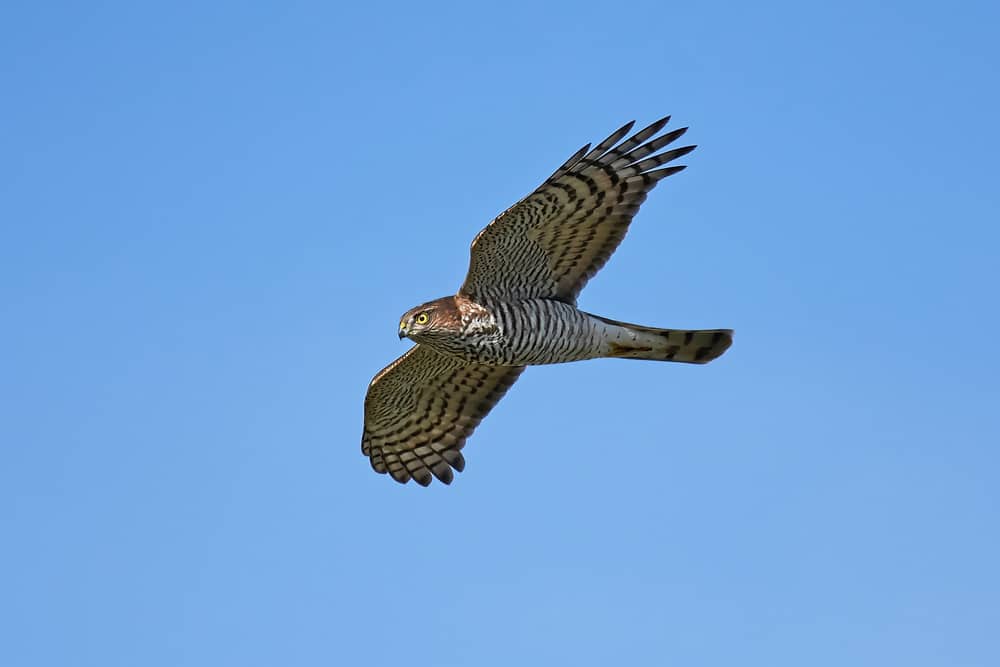
These hawks are found in Northern Europe and Asia and range from 3.9 to 12.1 oz (females are larger). Their habitats include forests and less dense woodlands, where they prey on other birds and small mammals.
Owls
Owls are well adapted to night hunting, with their keen sense of hearing. Owls are also found over most of the globe, where they mainly eat small mammals. Most owls eat full-grown or juvenile rabbits.
Barn Owls (Tyto alba)
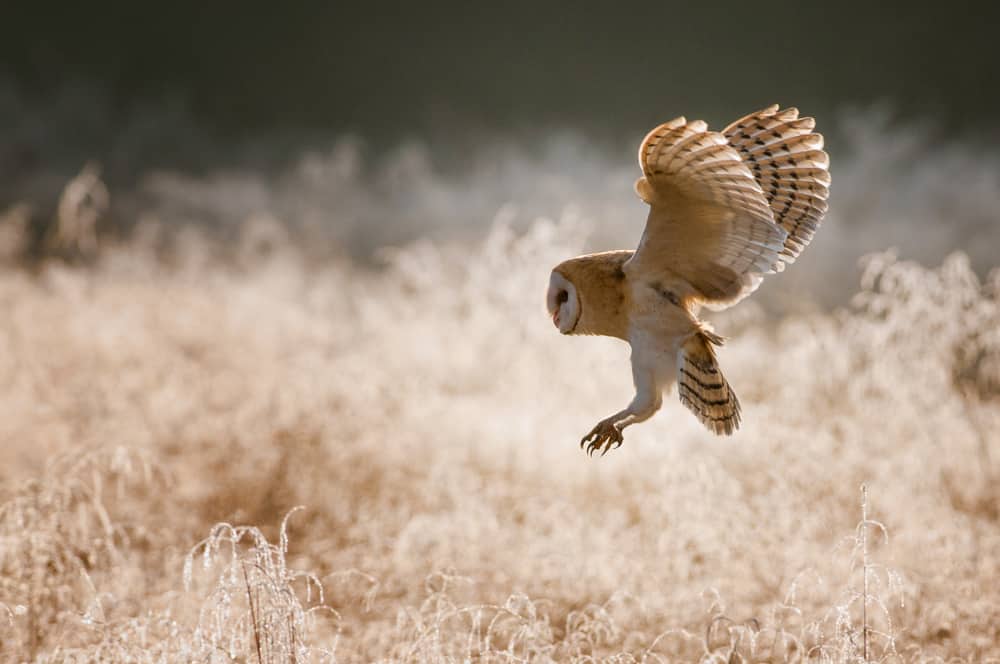
Aside from polar regions and desserts, these owls are found everywhere and eat mice, shrews, and rabbits. Barn owls are mainly found in grasslands, woodlands, and agricultural areas. They weigh between one and one-and-a-half pounds.
3. Reptiles That Eat Wild Rabbits
Reptiles employ a very different approach to hunting and catching rabbits. While many mammals and birds chase down their prey, many reptiles rely on camouflage and ambush techniques.
Some reptiles hunt through a type of heat vision, while others use their olfactory sense to track down food items.
Reptiles have a vast range of foodstuffs. Some of those who have rabbits on the menu include:
Snakes

Snakes are carnivores. They are specialized in eating a range of prey items and come in a multitude of sizes. Many smaller snakes will eat baby rabbits; however, only the larger species will eat adult rabbits.
Snakes can effortlessly slither into a burrow and catch a rabbit unaware.
Examples include:
- Pythons
- Boa Constrictors
- Eastern Brown Snakes
- Bull Snakes
Lizards

Lizards, much like snakes, come in various sizes and shapes. Lizards are adept at “smelling” out prey items with the use of their Jacobson’s organ.
Most large lizards have powerful jaws, strong, sharp claws, and the ability to dig into rabbit burrows.
Examples include:
- Iguanas
- Komodo Dragons
- Monitor Lizards
- Crocodilians
Crocodilians, much like other reptiles, will not think twice about catching and eating a rabbit. The biggest issue is, these reptiles are primarily found in and around water. The likelihood of coming across a rabbit is not very high.
Alligators, crocodiles, and caimans will all eat rabbits when available.
Rabbits As Food Items For Captive Animals And Pets

Aside from wild rabbits being hunted by wild and domestic animals, rabbits are also bred as food for captive animals and pets.
Whether it’s a snake, lion, or hawk in a zoo exhibit, rabbits make for easy, cheap, and nutritious meals. Rabbits of different sizes and ages are fed in different levels of being processed.
Large constrictors receive whole rabbits, while birds of prey are often fed pieces.
As for pet nutrition, there are raw dog food companies that use whole rabbits minced up as a dietary option for domestic dogs and cats.
Rabbits As Eaten By Humans

Humans are a unique species, so they get their own heading. Spread across the globe and vastly ranging in weight, humans are considered (biologically) omnivores.
Humans, globally, have long since hunted and eaten rabbits as an alternative to other meats.
Rabbits are high in protein, taste great, and are relatively cheaper than beef and pork.
Rabbits have also, in more recent decades, specifically been farmed as livestock for meat. Many homesteaders have taken up this venture as a sustainable way to supplement the dietary requirements of their families.
Conclusion
Rabbits are a major prey species for many animals. They lack a range of defensive mechanisms. Although they do not always form part of most animals’ “regular” meals, many carnivores and omnivores will not let the opportunity pass by if a rabbit is a menu option. Humans have even moved from hunting rabbits to farming them as livestock.
Sources:
Live Science: Rabbits
How Stuff Works: Wild Cats in the U.S.
National Wildlife Federation: Mountain Lions
San Diego Zoo Wildlife Alliance Library: Ocelot Distribution and Habitat
One Kind Planet: Bobcat
One Kind Planet: Leopard
San Diego Zoo Wildlife Alliance Library: Lion Distribution and Habitat
Sea World: Cheetah Habitat
The Christian Science Monitor: House cats and tigers share 95.6 percent of DNA, study reveals
Biological Diversity: Mammals
Live Science: Jackal Facts
ZME Science: Meat-Eating Hares
All About Birds: Red-Tailed Hawk

